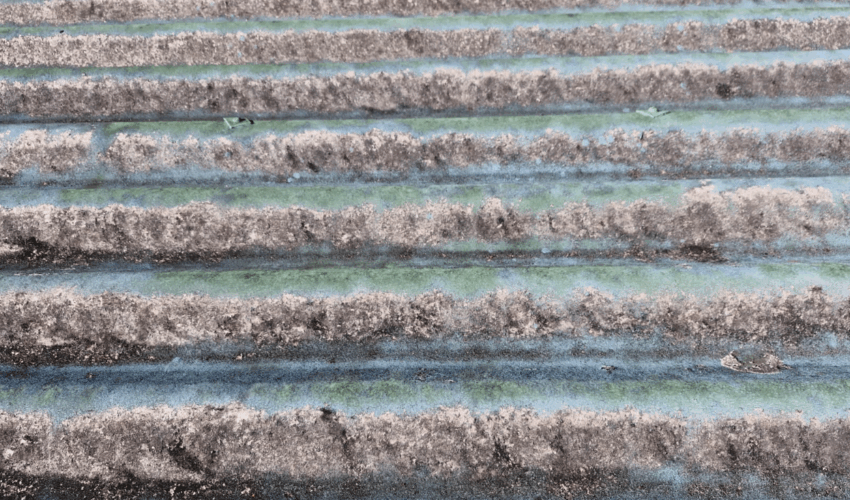Signs Your Asbestos Roof Needs Replacement
Asbestos is a naturally occurring mineral that was once widely regarded for its durability, fire resistance and insulation properties. Up until the mid-1990s, asbestos was commonly added to a range of construction materials, including roofing products like cement sheeting, shingles, tiles, insulation and flashing.
Over time, these asbestos-containing materials (ACMs) can become friable, releasing hazardous asbestos fibres into the air, which can lead to severe health risks when inhaled. These risks increase if your roof is exposed to drilling, hail damage and pressure washing. Ultimately, the older the roof, the higher the risk of deterioration, especially when it’s exposed to the elements.
Think your roof could contain asbestos? Here’s how to tell if it needs replacing.
Key signs your asbestos roof may need replacement
There are a few key signs that typically indicate your asbestos roof could be in need of repair or replacement:
- Visible cracks or flaking: Damaged sheeting and roofing materials can release asbestos fibres into the air, increasing the risk of exposure.
- Discolouration or moss growth: These signs are common indicators of age, trapped moisture or surface breakdown, causing asbestos roofing to deteriorate.
- Sagging or warping: Often indicates serious structural weaknesses due to age, water damage or exposure to the elements.
- Soft or brittle texture: Sheets that crumble or sound hollow when tapped. This is a common sign of friable or bonded asbestos, which is generally considered the most hazardous type of asbestos.
- Leaks and water penetration: Can indicate degraded roofing panels, underlayment or materials.
- Broken or missing panels: Often occurs as a result of storm damage, age or poor previous repairs.
- Previous DIY repairs: From silicone and paint to cement patches, shoddy DIY repairs have the potential to disturb and damage asbestos roofing.
When it comes to roofs, it can often be difficult to identify signs of damage or deterioration from the ground. Rather than take matters into your own hands, it’s safer and more effective to engage a licensed asbestos roofing specialist to assess your roof. Don’t be tempted to tackle these types of projects yourself—not only is working at heights dangerous, but climbing on an asbestos roof can cause more damage, leaving you at risk of asbestos exposure.
The risks of leaving a damaged asbestos roof in place
Damaged roofs can eventually lead to even bigger issues and extra expenses, especially if they contain asbestos. As is the case with any ACMs, damaged asbestos roofs increase the likelihood of dangerous asbestos fibres being released into the roof cavity and contaminating insulation, ceiling voids, gutters and rainwater tanks. This can leave you and your family at a higher risk of asbestos exposure, which can cause irreversible damage and lead to serious illness, including lung cancer, mesothelioma and asbestosis.
Damaged roofs are often susceptible to further damage during severe weather events, like storms, hail and strong winds. Not only does this damage further increase the risk of asbestos exposure, but it can also lead to leaks and internal damage.
Over time, you might find it difficult to insure your home if it has an asbestos roof. Some providers and policies exclude asbestos altogether, whereas others require proof of condition before they’ll consider insuring your home.
Lastly, a damaged asbestos roof can devalue your property and make it more difficult to sell. Many buyers are deterred by the thought of having to repair or replace a roof soon after buying, which could end up costing you in the long run.
Rather than letting your roof deteriorate, it’s always best to have it professionally inspected and repaired.
Replacement vs. encapsulation: What are your options?
When it comes to repairing damaged asbestos roofs, you’ve usually got two options available to you: encapsulation or full replacement.
Asbestos roof encapsulation involves coating damaged asbestos-containing roof materials to seal in the fibres and prevent them from becoming an airborne hazard. Encapsulation can be a good short-term solution if your roof is still in relatively good condition, but the special coating is likely to degrade over time, meaning you’ll still need to replace your roof in the future.
Full asbestos roof removal and replacement is generally considered the safest and most effective long-term solution. Some asbestos roofing specialists, including Adios Asbestos, also offer partial asbestos roof replacement services in cases where a specific area needs repair or replacement.
It can be difficult to understand the extent of damage to your roof, which is why it pays to engage an asbestos roofing specialist for a professional assessment. They’ll be able to test your roof for asbestos and provide expert recommendations tailored to your situation.
Why choose Adios Asbestos for roof removal
At Adios Asbestos, our team of experienced asbestos experts are licensed and insured to complete bonded asbestos roof removal across Brisbane and the Sunshine Coast. We follow a tried and tested asbestos roof removal process that involves safe containment, removal, decontamination and disposal of ACMs in line with Queensland’s asbestos safety regulations and EPA disposal requirements. We also offer optional air monitoring services and clearance certificates for greater peace of mind.
Our roofing specialists work with you to create a tailored roofing replacement solution that suits your budget and your home. From shingles and tiles to metal sheeting, we use only the highest quality roofing materials that are designed to look great and withstand the elements.
With transparent quoting and no-pressure advice, you can trust the team at Adios Asbestos with your asbestos roof removal needs.
Next steps for homeowners
Your roof is one of the most exposed areas in your home. Rain, hail or shine, your roof should be weather-resistant and free from leaks and damage. If your roof is over 30 years old or it’s looking a little worse for wear, it could be worth arranging an inspection with an asbestos roofing specialist at Adios Asbestos. Not sure if your old roof is still safe? Leave it to the asbestos roofing professionals to take a look. Get in touch with Adios Asbestos for expert asbestos roof inspection and removal.

